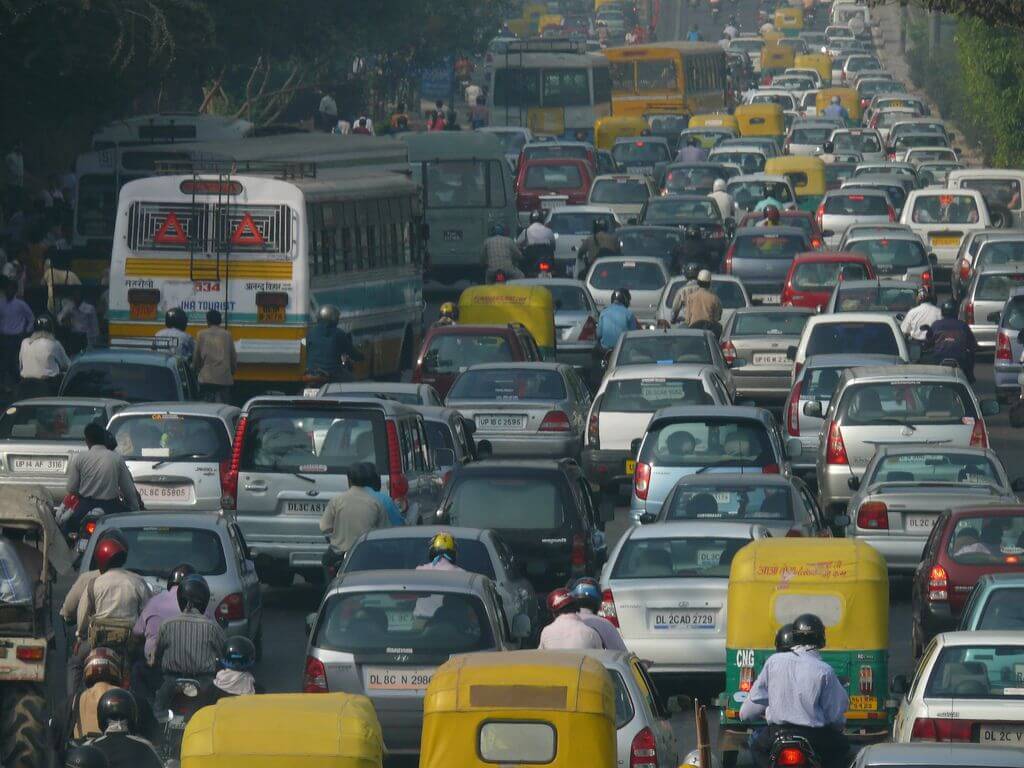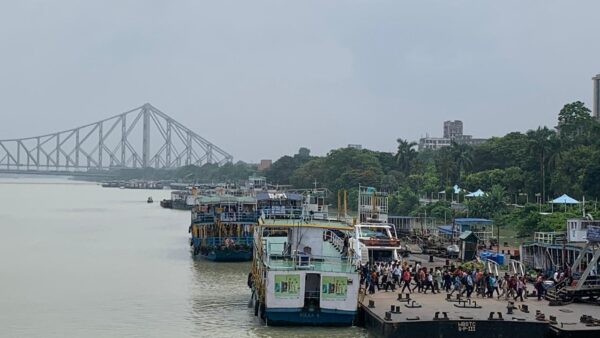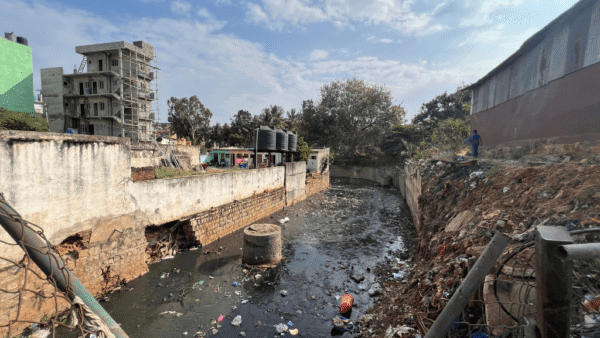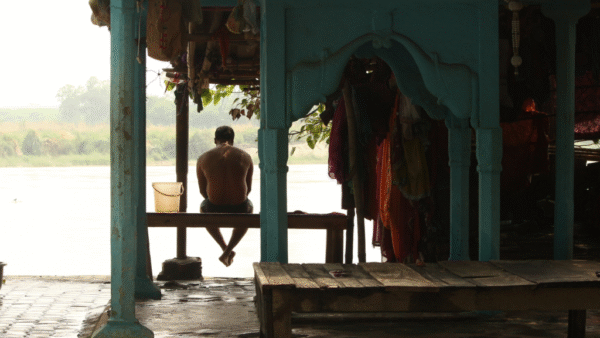During a campaign in Delhi, my team and I met Ramakant Kumar, a migrant worker from Bihar. He has worked as a security guard in Delhi and relied on public buses for his daily commute over the past 20 years. His workplace has been roughly five kilometres from his home in Okhla; the bus system has provided him an affordable mode of transportation. Ideally, Ramakant should not take more than 20 minutes to reach his workplace but, increasingly, the commute takes him about an hour.
These days, he finds it difficult to secure a seat and reckons that this could be because the number of buses has been reduced, leading to more commuters in each bus and longer wait times at the bus stop too. Long commute in Delhi, one of the world’s most polluted cities, means thousands like Ramakant are exposed to high pollution levels on the roads. Coupled with the non-ventilated and less-than-adequate living spaces, they deal with breathing issues and migraines besides other ailments. This is the reality of nearly three million people who commute by bus every day in Delhi.
It is the most affordable public transport system in a city with a rising number of private vehicles and the large metro network. It is also the transport network that is among the most climate-friendly ones, besides cycling and on foot, and must be aggressively expanded. However, its role in mobility within the city and in climate mitigation has not been sufficiently explored in the policy-making space or by governments.
Delhi’s (in)famous pollution
In the annual World Air Quality Report by IQAir, Delhi has consistently earned the title of the most polluted[1] capital globally. According to the data by IQAir, the PM2.5, Particulate Matter which is the main polluter, consistently lies in the ‘unhealthy’ category at more than 15 times the WHO air quality guideline value. The PM10 values show similar ‘unhealthy’ trends.[2] This has left a trail of impact on people’s health and livelihoods. According to Greenpeace’s cost estimator tool,[3] the city’s air pollution was responsible for an estimated 54,000 premature deaths in Delhi in only the year 2020. It estimated air pollution-related economic losses of USD 8.1 billion or Rs 58,895 crore, which is nearly 13 percent of Delhi’s annual GDP. The conversations and policies about Delhi’s pollution tend to not highlight the plight of its marginalised communities – the poor, outdoor workers, women and children, and those residing in informal settlements – who are disproportionately affected by the poor quality of air despite their lower contribution to the problem.
A recent report by Chintan, an environmental research and action group, on the unfair quality, the impact of air pollution on three occupations[4] showed disconcerting findings about the pulmonary health of different occupational groups. In the pulmonary function tests, only 25 percent of waste pickers, 14 percent of safai karamcharis and 14 percent of security guards showed normal pulmonary functions compared to nearly 55 percent in the control group. This showed a higher incidence of ailments in these sections co-related with a higher level of exposure to polluted air. The study also highlighted a notable gender disparity with women outdoor workers – women waste pickers and safai karamcharis were found to be 3.9 and 6 times respectively more likely to have a respiratory disease or deteriorated lungs.
A report by Centre for Science and Environment (CSE) showed that motorised transport contributed between 49.3 and 53 percent to Delhi’s air pollution during Diwali week in 2022.[5] Vehicular emissions have been among the single-largest contributors to Delhi’s polluted air. A study by the Delhi government and IIT-Kanpur last year showed this to be a worrying 38 percent.[6] A study[7] by The Energy and Resource Institute (TERI) and Automotive Research Institute of India (ARAI) found that the contribution of vehicular emissions in Delhi’s air could go up to 30 percent if secondary particles are taken into account. Notwithstanding the need to control other sources of emission, reducing motorised private transport such as cars, SUVs and motorbikes deserves to be considered seriously. Instead, the share of private transport in the city’s multi-modal transport network has steadily increased.
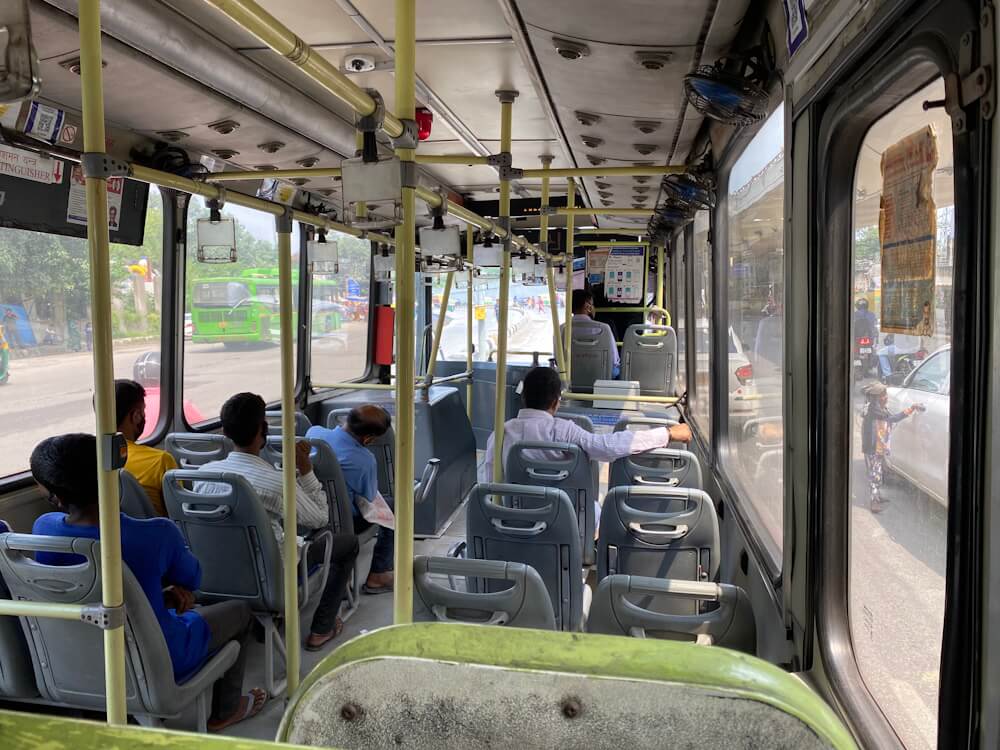
Photo: Avinash Chanchal
The surge in private transport
The number of motor vehicles on Delhi roads surged[8] by a staggering 21 times between 1981 and 2021. The increased number of vehicles and the burning of fossil fuel in them have become one of the major contributors to the air pollution crisis in Delhi, resulting in adverse impact on human health – especially on the marginalised and vulnerable sections of people in the city.
According to the Global Gridded Model of Carbon Footprints (GGMCF) Delhi[9] has the highest annual carbon footprint. Delhi’s annual CO2 emissions are 69.4 million tonnes which are equal to the total combined CO2 emissions of Hyderabad, Chennai, and Bengaluru. Unfortunately, the prevailing development model of infrastructure is designed to favour private transport, especially cars, through the construction of flyovers and highways. This poses grave safety concerns for non-car commuters and, of course, adversely impacts the environment and public health. Such models also manifest the growing social and economic disparities in our cities.
This underscores the urgent need for a paradigm shift in Delhi’s current transport system. Discussions in the sustainable mobility sector offer three key frameworks to the shift: Avoid, Shift, and Improve. This means avoiding and reducing the need for number of trips and the length of people’s commute, encouraging the shift or transition from private vehicles to the more environment-friendly public transport and non-motorised transport in order to reduce the demand for fuel and positively impact air pollution, and, lastly, improve and enhance the energy efficiency of various transport modes.
In January 2024, we, at Greenpeace India, collected 13,000 signatures and postcards from citizens and submitted recommendations to the Chief Minister and Transport Minister of Delhi asking them to allocate funds in the budget for these policies. They were open to implementing incremental steps. However, the need is to transform the system itself – with urgency and speed which are missing.
The National Urban Transport Policy 2014 (NUTP) has clearly given a guideline of what needs to be done to make this transformation possible, which is, allocating a separate budget for bus transportation, creating a Comprehensive Mobility Plan (CMP) integrating different transport systems and allocating funds.
The plan, the advice
The CMP for Delhi, if formulated, is not available on public platforms. Delhi government should disclose the plan and establish a dedicated sustainable urban transport fund to ensure an efficient public transport system which prioritises people over private vehicles. Importantly, the plan should be legally binding through a comprehensive Urban Transport Act to cover all aspects of transportation in the city.
A safe, inclusive, equitable and accessible public and non-motorised transport system can help cities become not only cleaner, safer and socially inclusive but also more economically productive and, therefore, more resilient. According to the Ministry of Housing and Urban Affairs’ benchmark,[10] cities should have 60 buses per one lakh population. Applied to Delhi, this means the city needs at least 15,000 buses for its 20.57 million people. However, there are only around 7,500 buses combining the Delhi Transport Corporation and cluster bus system.[11]
In 2017-18, the state government told the Delhi High Court that the city needed 11,000 buses but the fleet of DTC buses has decreased in the last 10 years. In 2021, the entire fleet of 3,760 buses run by Delhi Transport Corporation (DTC) had been officially declared “overage”, a first in the history of the state transport utility, which was set up in 1971.[12]
There is an urgent need to procure buses on a priority basis with a commitment to achieving a target of at least 11,000 buses by 2024. There has been a moderate increase in the number of buses over the last few years[13] but the bus system is now plagued with declining ridership especially on certain routes. Even so, nearly three million travel every day.
The government proposed premium aggregator buses with high-tech facilities but these have to be accessible for all users. Besides, without Bus Rapid Transit corridors, even these buses will be stuck in traffic making it difficult to get people to switch. This underscores the need to make the bus system not only accessible and affordable but also more comfortable, efficient and safer than it is today.
Bus travel is currently fare free for all women in Delhi which saw an increase in their ridership. Nevertheless, Greenpeace India’s recent report titled[14] ‘Halt for women bus users in Delhi’ revealed that 82 percent of them encountered situations where buses did not stop for them at designated bus stops, 54.2 percent faced discrimination and derogatory comments from both bus workers and male passengers related to the scheme. Such experiences not only hinder the access of women – a marginalised section – to public transport but also contribute to an unwelcoming and unsafe environment. In a statement, the Delhi government said it has taken strong action on such complaints, blacklisted drivers, and would take all necessary corrective measures.[15]
As is well known, that the current public transport system is gendered.[16] The transport authorities and planners must establish a gender-sensitive public bus infrastructure, encourage behavioural shifts among bus workers and sensitise people to address the information gap regarding the fare free bus scheme. Such steps would ensure the safety, dignity and equal access for women in public transport.
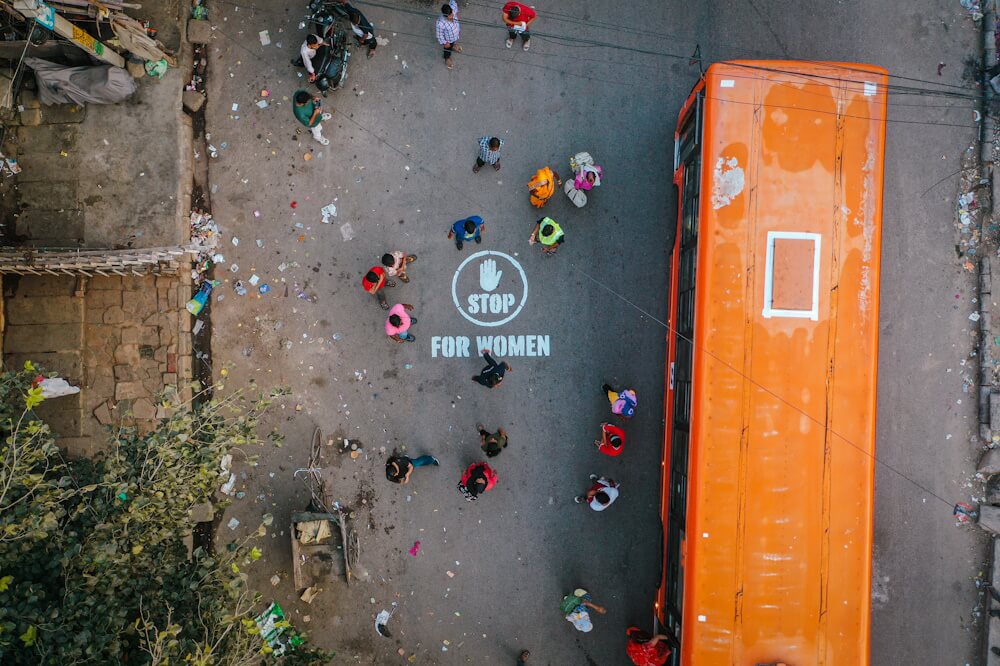
Photo: Avinash Chanchal
The key
Beyond these steps, what is essential is a mind-shift in the transport authorities about public transport. They need to stop viewing public transport as a profit-making entity and instead recognise it as an essential service like healthcare and education. The profit-orientation has also adversely affected investment in upgrading and expanding the public transport network. Abolishing bus fares for children, low-income groups, the elderly, people with disabilities and so on will make it more affordable and accessible to those who need it the most.
Delhi has more than 79 lakh vehicles.[17] To attract the private vehicle users to use public buses, the efficiency of the bus system as well as its comfort level and broader infrastructure such as bus stops must be improved. Minimising variability in services, ensuring that buses adhere to schedules within a 5-minute window, reducing wait times, and dedicating bus lanes on roads will significantly increase the carrying capacity per hour. This could make buses a more attractive option for all.
The authorities announced 15 dedicated bus[18] lanes last year. However, there is a huge gap in the implementation of these bus lanes. The traffic police are not under the Delhi government which impedes the enforcement of bus lanes. Merely marking them on roads is not enough. Research shows that BRTS bus lanes should be in the middle of the road, otherwise people will park on bus lanes or walk there. Also, dedicated bus lanes will not make sense if they are not integrated into the bus corridors.[19]
Integration of transport modes is important too. To make buses, indeed all public transport efficient, inclusive, and accessible, the government and transport authorities need to take a holistic approach and integrate various modes such as the metro and non-motorised systems such as cycling and walking.
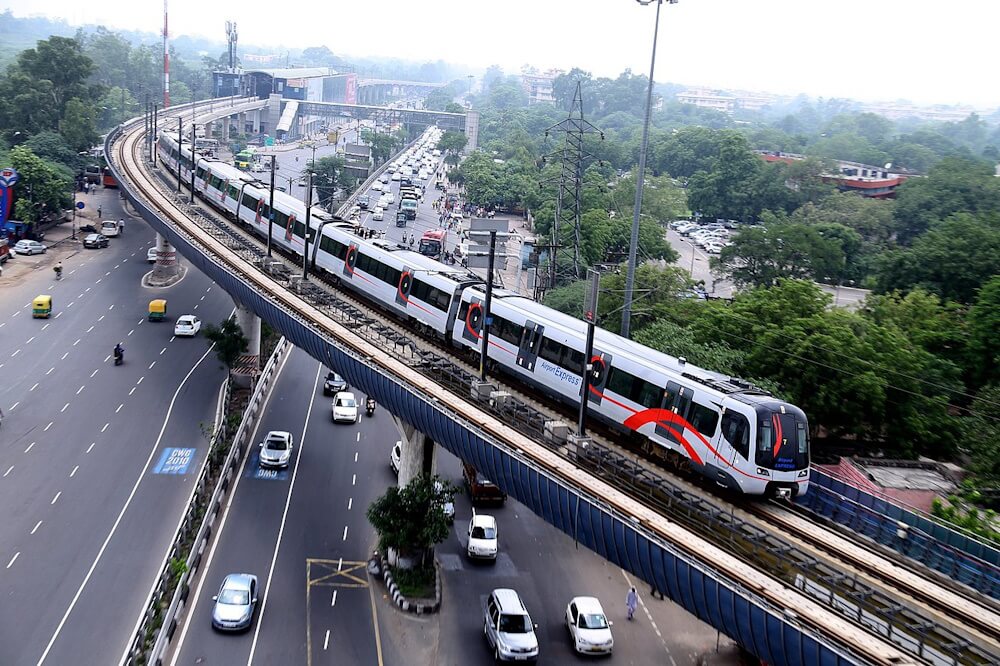
Photo: Wikimedia Commons
Affordability is another key issue of public transport. Despite getting higher funding, the Delhi metro is unaffordable[20] for 49 percent of its households – the urban poor and low-income groups. There is an urgent need to make the metro affordable for everyone and rationalise routes too. If we can establish a symbiotic relationship between different systems, specifically the metro and buses, the first and last-mile connectivity can be enhanced. This can mean a smoother transition for commuters, reducing their reliance on private vehicles.
Recently, Kailash Gahlot, Delhi’s transport minister, informed the media that Delhi achieved a significant milestone[21] with a record-breaking 19.5 percent surge in electric vehicle (EV) sales. In the last two years, the state government has announced[22] many incentives to promote electric cars to tackle the air pollution crisis. However, it is important to pause and ask whether the electrification of private vehicles alone is the right and just solution to this crisis; equally, what is the affordability of EVs to the marginalised?
Often in discussions about climate action, the action on public transport takes a back seat but with the escalating climate crisis, there is an urgent need to take immediate action on this front. To meet the crucial not-above 1.5C warming climate goal, the major root cause to address is fossil fuel consumption in the transport sector which contributes around[23] 14 percent of the total GHG emissions. This cannot happen only through the electrification of private vehicles.
It is high time governments recognised that an efficient, cost-effective and reliable public bus system is needed to tackle the climate crisis. A joint report[24] by ITF and C40 revealed that doubling public transport usage as part of a green recovery would, by 2030, create tens of millions of jobs in cities around the world and cut urban transport emissions by more than half. The effects would be similar in Delhi, indeed all over India too. The ripple effects of such an approach would also benefit lower-income communities and connect people to work, education, and community.
What this calls for is a comprehensive reorganisation of the city’s transport system. The individualised and motorised private transport must be substituted by accessible, affordable, comfortable and reliable public transport networks. The need to build the transport system that carries more people more quickly and conveniently to their destination while using less energy is more critical than ever. Such a public transport system would also make Delhi more equitable and sustainable.
Avinash Chanchal is a climate campaigner who has been involved in climate activism for several years, working on various campaigns related to climate change. For the last few years, Avinash has been actively advocating for a just and equitable city. He has contributed to public transport and clean air campaigns in various cities. Currently, he leads the campaign team at Greenpeace India.
Cover photo: Wikimedia Commons

